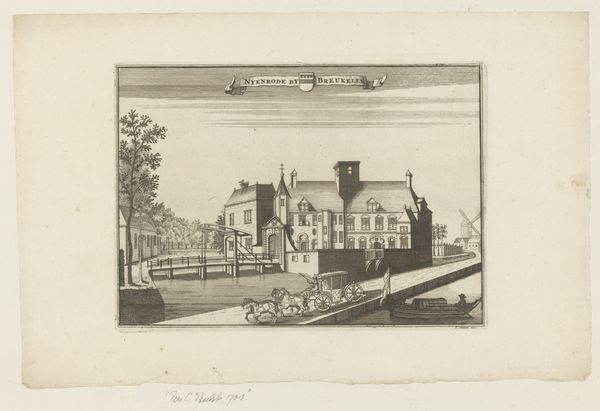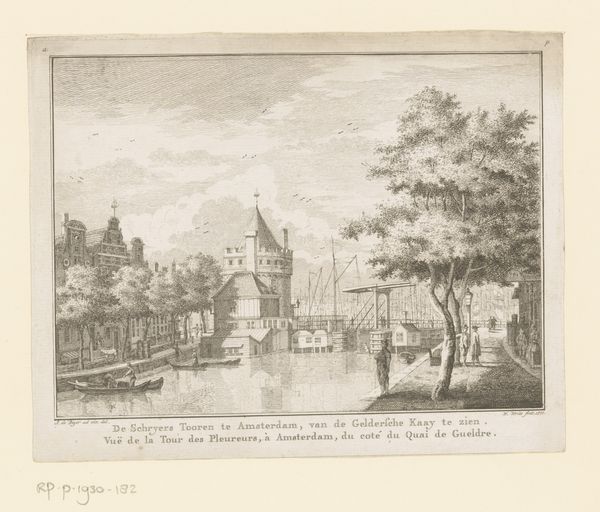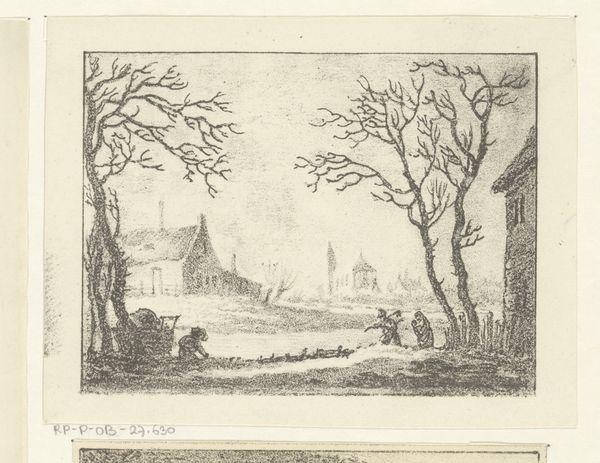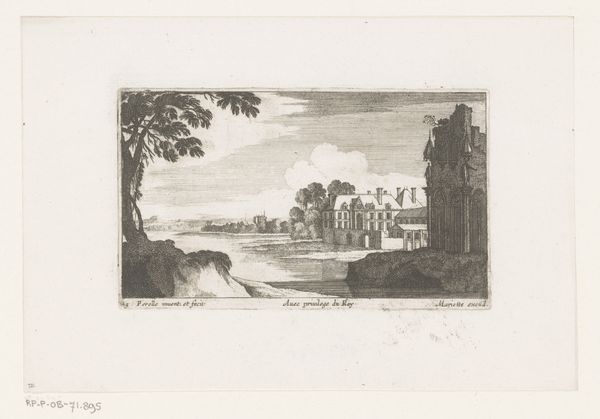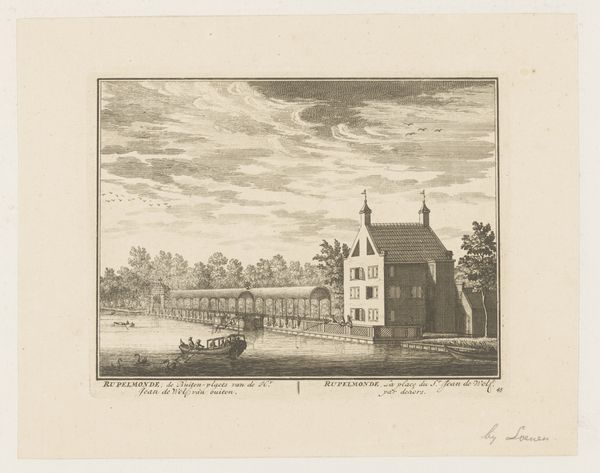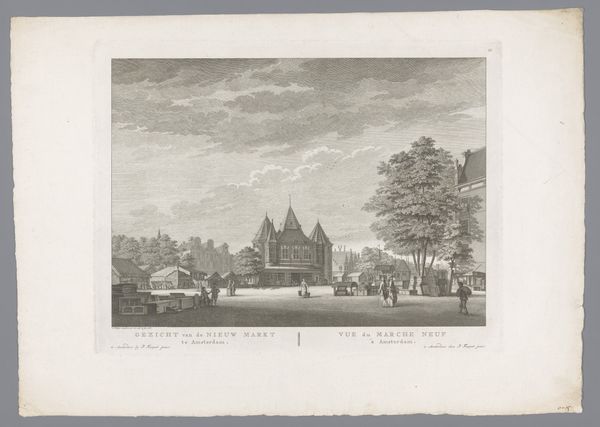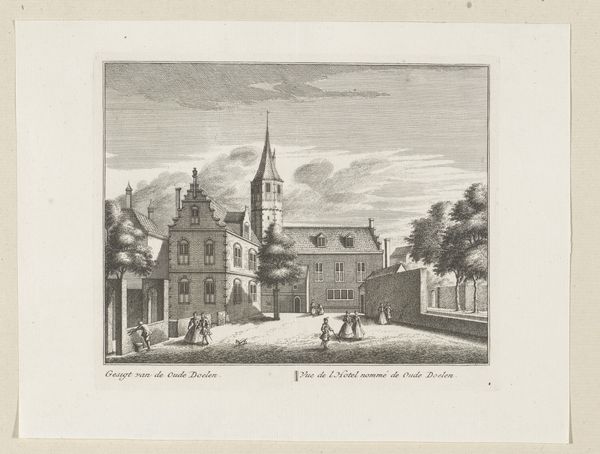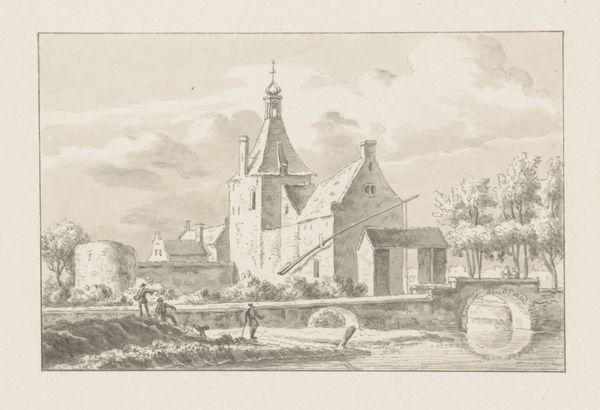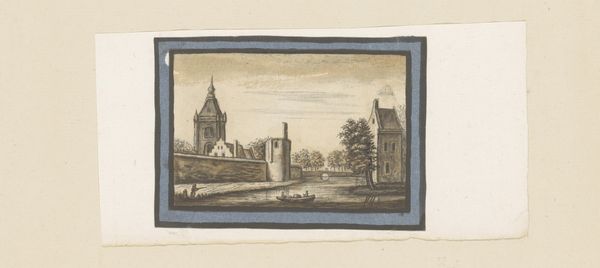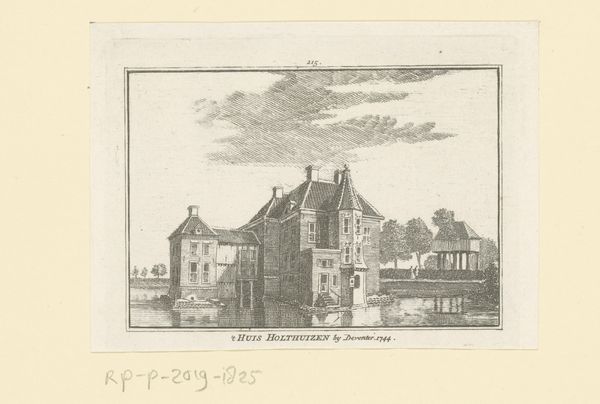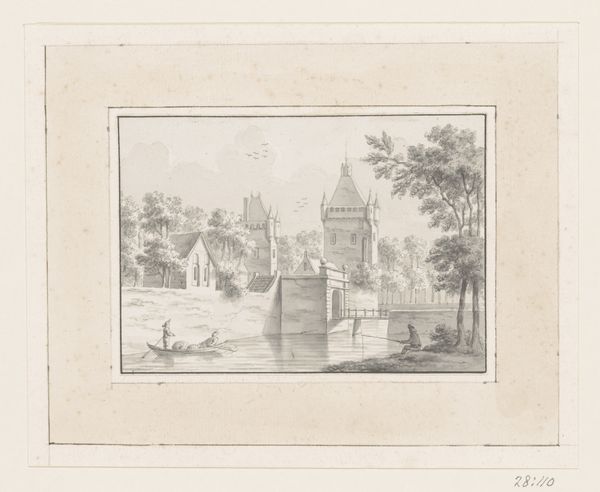
print, etching, engraving
#
baroque
#
dutch-golden-age
# print
#
etching
#
landscape
#
cityscape
#
engraving
Dimensions: height 82 mm, width 110 mm
Copyright: Rijks Museum: Open Domain
Curator: Hendrik Spilman's print, dating back to around 1746, offers a fascinating glimpse of the Kennemerpoort in Alkmaar. The Rijksmuseum now holds this piece. What strikes you about it? Editor: It feels so ordered and balanced, yet serene. The meticulous details invite you in. But even at first glance I sense something...symbolic in the relationship between that windmill and city gate. Curator: Precisely! Windmills weren't just practical, but also symbols of Dutch ingenuity and prosperity, critical for water management and industry. Locating one so closely with a prominent city gate underscored Alkmaar's economic dynamism. Consider, too, the gate itself: beyond a physical structure it represents civic identity and control. This particular gate channeled trade and, potentially, civic resistance, given the number of sieges Alkmaar endured during the Eighty Years' War. Editor: It certainly projects power, even in monochrome. The light suggests morning, almost as a symbolic re-birth. And while the bridge bustling with small figures signals trade and daily life, the prominent arches over the water resemble those of Roman aqueducts: emblems of permanence and the controlled distribution of resources. The very essence of civilization... or the aspirations toward it. Curator: I find that the depiction is more practical than celebratory, almost bureaucratic. It reflects a Dutch Golden Age aesthetic where clarity and record-keeping are paramount. Note how Spilman emphasizes the functional aspects of both gate and windmill—they aren't idealized; they are documented. What does this say about Alkmaar's citizens' worldview, compared to the aristocratic portraiture emerging across Europe during that era? Editor: An apt point. Though practicality and precision guide the work, it nonetheless becomes a powerful projection of the ethos that sustained the republic during such tumultuous times: to harness both human skill and natural forces in service of a prosperous, defended city. Curator: In effect, then, the Kennemerpoort etching serves as more than a simple cityscape. It gives access to the era's prevailing ethos about community, economics and national identity. Editor: Leaving us to ponder, how much did those perceptions differ *inside* that city versus outside?
Comments
No comments
Be the first to comment and join the conversation on the ultimate creative platform.
